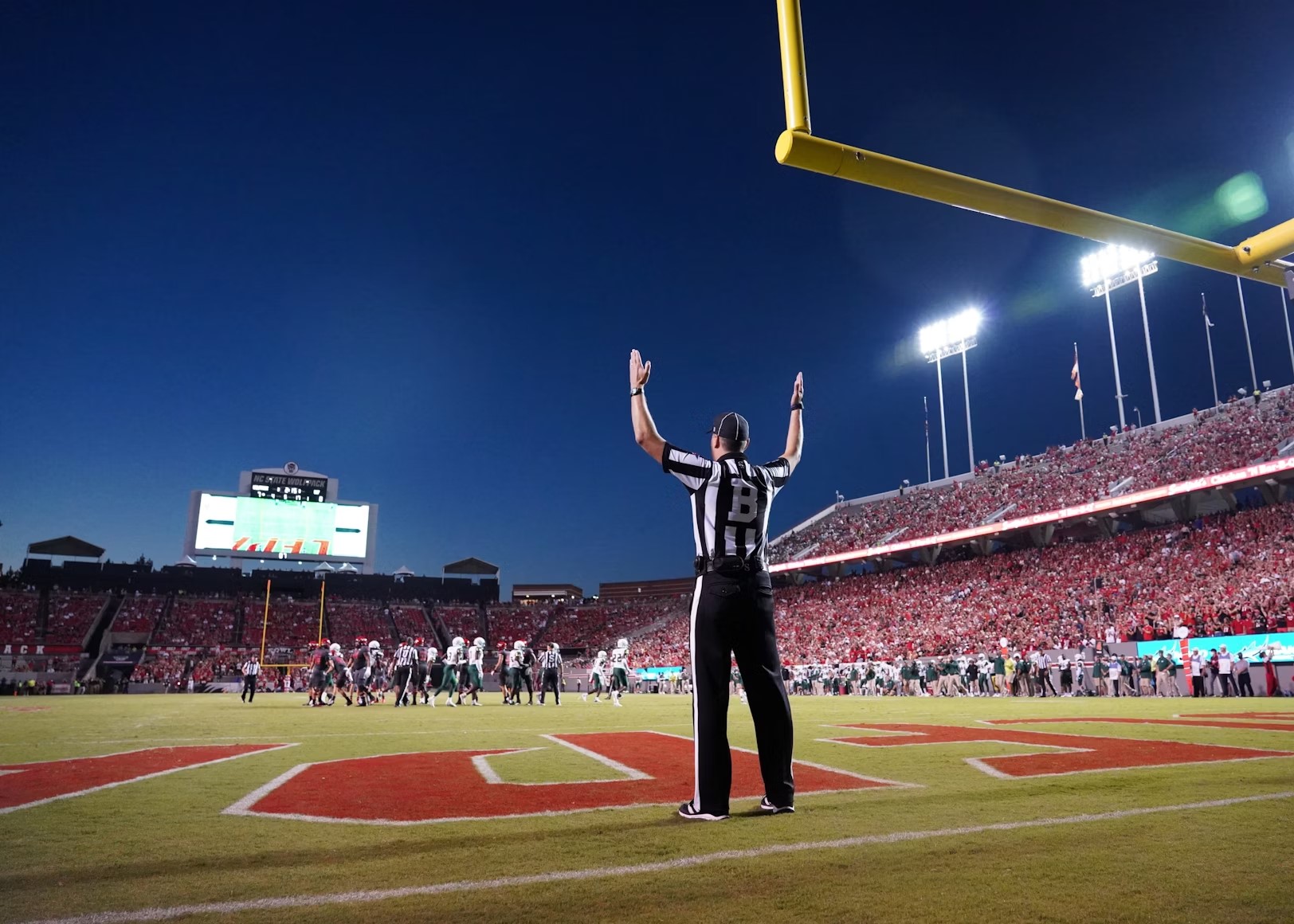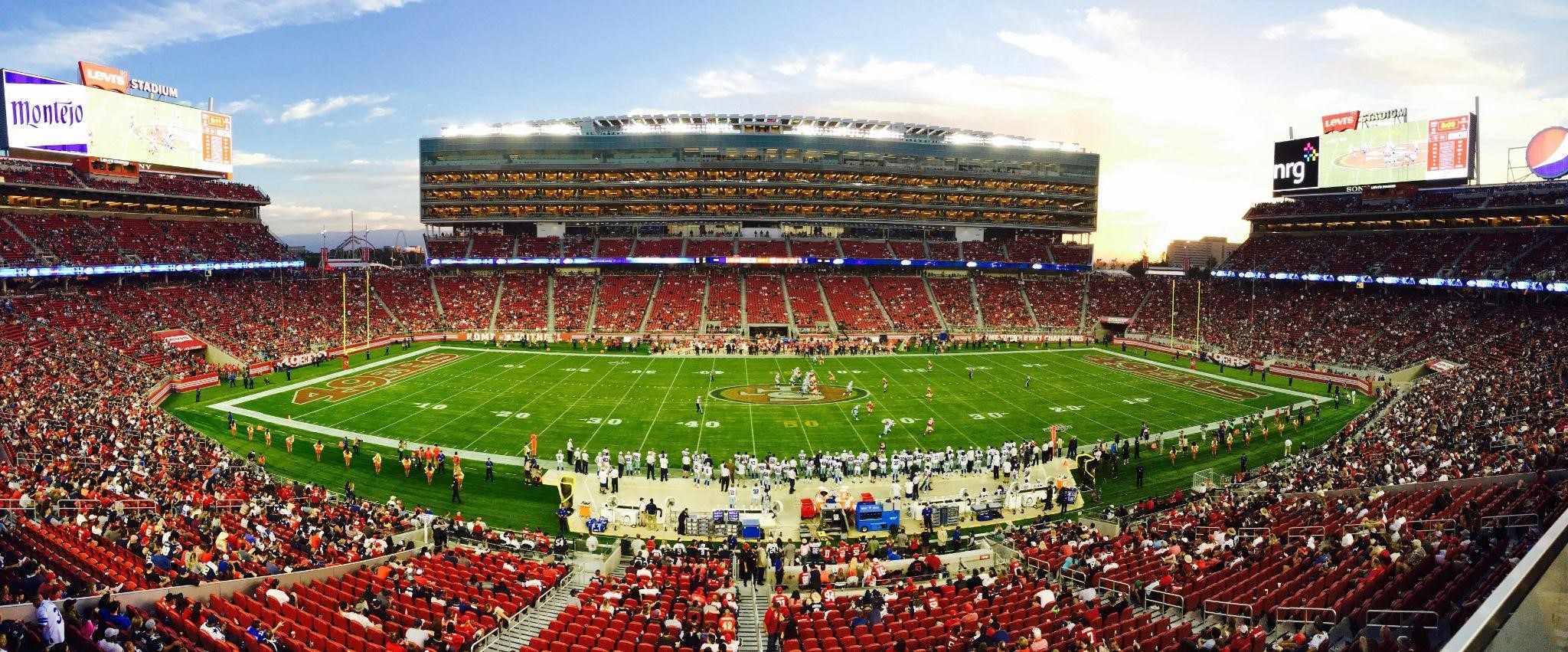Gridiron Showdown: Bridging the Gap Between Football and College Football
American football, with its thrilling plays and pa

American football, with its thrilling plays and passionate fan bases, presents itself in two distinct forms: professional and college. The National Football League (NFL) runs professional football while the National Collegiate Athletic Association (NCAA) operates college.
While both share the core elements of the sport, they diverge in aspects such as fan engagement, rules, playoff structure, global outreach, and the pathway to professional play. They also differ on when the games are played, with NCAA games taking part mostly on Saturdays and NFL games primarily on Sundays and Mondays. This article delves into the major differences, offering a detailed view of how each level of the game offers a unique experience.
Fan Engagement
NFL fans are known for their loyalty to franchises, often passed down through generations. The league's broad appeal, supported by extensive media coverage and marketing, has led to a diverse fan base spread across the nation and even globally. NFL fans are heavily involved in fantasy football leagues, where they simulate the role of team managers, adding a layer of engagement to the viewing experience. Similarly, in the college football sphere, fan engagement also extends to betting, with platforms like FanDuel College football odds providing fans an opportunity to engage with the games at a deeper level, analyzing odds and making predictions, further enhancing their involvement and investment in the sport.
Contrastingly, college football fans are often tied to their alma mater or local teams, creating a sense of community and regional pride. College games are social events, intertwined with school traditions and long-standing rivalries. The pageantry surrounding the games, including marching bands and tailgating, is a significant part of the experience. Fight songs, school chants, and a predominant student population are more prevalent in college stadiums compared to the NFL. College football fans exhibit a deep emotional connection to their teams, often rooted in personal history and community identity.
Rule Differences and Their Impact
There are some significant rule differences between the two levels. In NCAA football, for example, even in the absence of any contact from an opponent, a player is considered down if any portion of his body other than his hands or feet meets the ground. In contrast, a player in the NFL is not deemed down until they are touched by an opponent. In addition, an NFL wide receiver needs two feet in-bounds to make a proper catch, but the college game permits just one foot.
These differences extend to overtime rules, pass interference penalties, targeting reviews, and the clock management strategy, each adding unique tactical layers to their respective games. The NFL's more stringent rules generally require greater precision and skill, reflecting the higher level of professional play. In contrast, college football's rules can sometimes lead to more dynamic and unpredictable gameplay.
Playoff System and Championship Differences
The path to the championship in the NFL and college football also varies significantly. The NFL uses a single-elimination playoff system, culminating in the Super Bowl, a globally watched event. The playoff teams are determined by regular season records and a set of tie-breaking procedures, leading to a clear and structured route to the championship. Overall, seven teams from each conference (a total of 14) make the postseason.
In contrast, college football's playoff system has evolved. The current College Football Playoff (CFP) system involves a selection committee that ranks teams based on their performance, strength of schedule, and other factors. This leads to a four-team playoff, culminating in the National Championship. The CFP system, though more inclusive than previous systems, often sparks debates regarding team selections and rankings. Next year, the system will expand to 12 teams. Additionally, college football maintains its traditional bowl games, which, while not directly tied to the championship or regular season, are prestigious and carry historical significance.
Global Appeal and International Games
The NFL's global outreach has expanded significantly over the years, with regular-season games being played in countries like Mexico, England, and Germany. These international series games are part of the league's strategy to broaden its global fan base and market the sport internationally. The appeal of the NFL overseas is evident in the growing number of international fans and the increasing popularity of American football in other countries. There has even been talk of a franchise in London.
College football, however, maintains a predominantly American focus, with limited international exposure. The most notable exception is the occasional Week 0 game played in Ireland, often marketed as a cultural exchange and an opportunity to showcase American college football to an international audience. While college football enjoys immense popularity in the US, its international footprint is relatively small compared to the NFL.
Talent Development and the NFL Draft
The difference in talent between the NFL and college football is significant, largely due to the professional league's selection and development process. The NFL Draft is a major event in which teams select eligible college players to join the league. This process is crucial in maintaining competitive balance within the NFL, as it allows teams with poorer records to have the opportunity to pick top college talents. Additionally, players don’t have the option to play for the franchise they wish to play for unless they are a free agent and can work out a deal with that team.
College football, on the other hand, serves as a breeding ground for these talents. They are recruited by college coaches and have more freedom in choosing where they want to play. If they are unhappy with a school, they can freely enter the transfer portal, a new addition to the offseason.
Players in college football are often at the beginning of their athletic careers, showcasing raw talent and potential. The college-level plays a critical role in developing these players, providing them with the platform to hone their skills, gain exposure, and prepare for the possibility of playing professionally. The stark contrast in the level of play between the two forms of football is most evident during the draft, where only a select few college players make the transition to the NFL.
Conclusion
In summary, while both the NFL and college football offer the excitement and drama of American football, they cater to different audiences and provide varied experiences. From the fervor of college traditions to the professional polish of the NFL, each form of the sport holds a unique place in fans’ hearts. Understanding these differences not only enhances the appreciation of the sport at both levels but also highlights the diverse ways in which football is woven into the cultural fabric of the United States.







